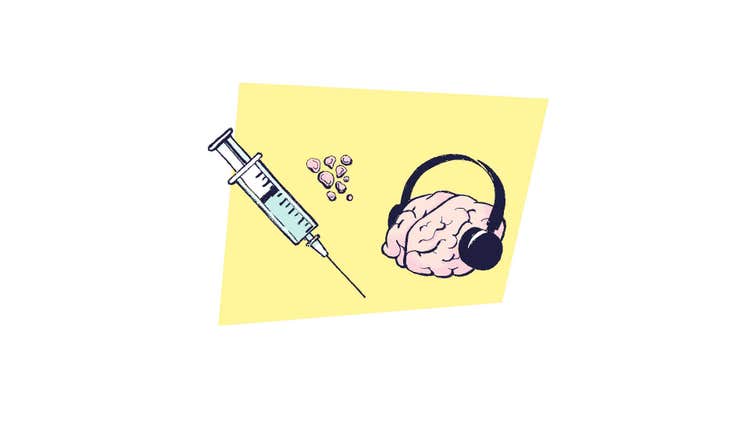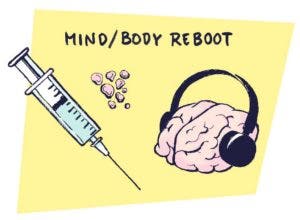Science Opens Its Mind to Psychedelics


Alongside the latest self-help books on making yourself trimmer, stronger and smarter is one whose unusual subject has made it a best-seller: mind improvement using psychedelic drugs.
“How to Change Your Mind” (Penguin Press, 2018) is not the story of LSD in the 1960s, although there’s plenty of that history within its pages. Rather, one of the most popular nonfiction books of the year is author Michael Pollan’s exploration of how science is beginning to recognize the positive potential of a host of psychoactive substances such as psilocybin, mescaline or ayahuasca on the human mind.
While research is still in the very early stages, recent scientific papers have provided some evidence that psychedelics could offer benefits to people with severe anxiety due to a terminal disease, those suffering from severe cases of post-traumatic stress disorder (PTSD), or people dealing with alcohol or drug addiction. Other research has begun to ask whether short-term “micro-dosing” with psilocybin or similar substances might provide long-term relief from anxiety.
Controlled use, the next frontier

Although there’s no conclusive evidence yet, supporters of additional research (along with some people who have taken things like psilocybin in the experiments) believe the next frontier could be their use, in controlled situations, by people hoping to eliminate ordinary anxiety and depression from their lives or to increase mental focus, clarity and even creative problem-solving by “shaking up” some of the brain’s connections.
In fact, one group of researchers from the University of North Carolina, Johns Hopkins University and Louisiana State University have theorized that psychedelics work by “acutely destabilizing local brain network hubs” that then allows for a “reset” of those networks, and that this activity “should be rigorously researched.” Other proponents of stepped-up research say that action may be key to these substances improving people’s overall mental state.
“A lot of depression is a sort of self-punishment, as even [Sigmund] Freud understood. We get trapped in these loops of rumination that are very destructive,” Pollan said in a recent interview with The New York Times. “And these deep, deep grooves of thought are very hard to get out of.”
We already know that powerful connections exist between physical health and one’s mental state. Strenuous exercise, for example, has been shown to release neurochemicals called endorphins that are the cause of “runner’s high” euphoria. “Gut health” and imbalances in the normal bacterial flora in our digestive tracts has been linked to anxiety, depression and other brain functions. We also know that chronic stress is linked to suppression of the immune system as well as insulin production.
Given that, it’s not difficult to imagine that disrupting and resetting mental pathways could lead to overall improvement in well-being. What’s more, many of the substances that are being researched today have been widely used for centuries.
Flashback to early research

The vast majority of psychoactive compounds, in fact, are natural. For the plants and fungi that make them, they can be a defense mechanism against destructive pests or an attractant for beneficial organisms like pollinating insects. They occur in many parts of the world, and their mind-altering properties have been exploited historically by various human cultures in ritual practices or in attempts to connect to the spiritual world.
Many of those natural substances like psilocybin (extracted from certain species of mushrooms) and mescaline (extracted from the peyote cactus), along with chemically synthesized compounds like LSD, became much more well-known the 1950s, when there was significant enthusiasm about their potential for mental health and improvement (as well as clandestine experiments around their potential use in interrogation or as weapons). Within a few years, they became an indelible part of the pop culture of the 1960s, thanks to the famous “acid tests” of the Merry Pranksters and the proselytizing of Harvard professor turned pop guru Timothy Leary of LSD as a way to “expand consciousness.”
When the anti-drug backlash of the late 1960s took hold, however, the entire class of psychedelics was made illegal and research abruptly stopped. Only in the past 10 years have scientists restarted serious inquiries into the possible benefits of these substances, and it remains limited because of the legal status of psychedelics and, as a consequence, a lack of available research funds.
How psychedelics work

Along with how they affect different people, one of the first areas of investigation is into how these substances actually work. We know they affect the biochemical processes in the brain. Specifically, they are “serotonin receptor agonists,” which means they activate those receptors in the brain (similar to the effect of antidepressants such as Prozac that increase available serotonin levels). Derivates of the ergot fungus, which also can be used to synthesize LSD, are serotonin receptor agonists used today as treatments to relieve migraine headaches.
Among the advantages of psychedelics over many current medicines, supporters say, is that there is no evidence that they are addictive or that one can take a lethal dose. In addition, they don’t affect other parts of the body as do many anti-anxiety or anti-addiction drugs.
On the other hand, they are powerful manipulators of brain chemistry that in larger doses may lead to sensations that are unpleasant or frightening to the unprepared. Thus, they “are not risk-free drugs by any means,” Pollan told the Times. The risk appears to be reduced significantly when they are used carefully, in controlled circumstances and with supervision. Indeed, Pollan pointed out, researchers generally will exclude participants who might be at higher risk for negative psychological reactions.
More research needed

There is still a great deal to learn about brain chemistry before scientists will be able to say more definitively how and why these substances have the effects they do. That may be why much of the research today also involves the use of these substances in conjunction with standard psychotherapies, similar to how modern antidepressants are typically prescribed.
The few studies that have been done with people have involved small numbers of subjects, so there isn’t enough data to support any firm conclusions. The anecdotal evidence from those studies, though, is powerful enough to persuade many researchers of the need for much more robust investigation. They’re joined by lay supporters, including some like Pollan and fellow author Tim Ferriss who have acknowledged using them. Ferriss has pledged to donate at least a million dollars to research into psilocybin and MDMA (a psychoactive drug also known as ecstasy) over the next few years, work he characterized in a recent podcast interview as “shelved for decades for political and not scientifically justified reasons.”
Another reason that research is getting underway is that many of the people in charge of research institutions or grant-making organizations are themselves products of the 1960s and may well have tried LSD or mushrooms at the time. Now they are in positions that allow them to relaunch and fund serious research projects that were truncated when psychedelics were banned.
Until that research has provided more data, it remains an open question as to whether—or to what extent—psychoactive substances like psilocybin or mescaline might lead to some kind of mind “improvement” for people who don’t otherwise suffer from something like major anxiety disorder or addiction. If the results match the anecdotal evidence, though, we may see them become yet another tool for people looking to take their mental as well as physical performance to another level.
Video credit: enase, ShutterstockPhoto credit: Alan Rockefeller, Mushroom Observer; Krists Luhaers, Unsplash; Jynto, Wikimedia Commons; jesse orrico, Unsplash